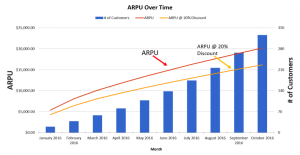Plus, email testing to win more conversions.
Good morning, Marketers, and here’s an insight into the future of events.
Last week I attended my second in-person work event of the year (will it be the last?). It offered some food for thought. It was staged in a New York hotel by Optimizely, the digital experience platform. Under its former name, Episerver, Optimizely had been in the habit of gathering a large number of people every year for the Episerver Ascend event which comfortably filled a large Vegas conference space.
This New York event brought together maybe 40 people (all with proof of vaccination). Selected customers and prospects, some partners and some media. In addition to just a couple of stage presentations, one by the remarkable NYU marketing professor and entrepreneur Scott Galloway, there were breakout sessions for in-depth discussions. The audience was small enough for that to be viable.
I don’t know that events like this will replace the big shindigs entirely, but if they drive value I think we’ll see a lot more of them.
Kim Davis
Editorial Director
When it comes to women, marketing is behind the times
The year is 2021. Women have careers. They have spending power. They are increasingly taking their place in professional and executive ranks. Yet much of advertising and marketing is stuck in the past, showing women less frequently, with fewer words spoken, less often in positions of authority, but more often shown in a sexual light, according to a recent study by the Geena Davis Institute on Gender in Media (GDI).
“In terms of the leading media advertisers we partner with, they are acutely aware of the disparities,” said Madeline Di Nonno, president and CEO at GDI. While men do head these firms, “they recognize the blind spot and the weakness’” she added.
The notion that the zenith of a woman’s career is husband-marriage-children “is an idea that has been cemented in our culture for such a long time,” said Jane Cunningham, co-author of the book “Brandsplaining: Why Marketing is (Still) Sexist and How to Fix It.” “Women are often cast in the role of not speaking,” Cunningham added. They are not seen leading. They are seen wearing less clothing. “Creative directors have been fed this stuff for decades.”
The incident illustrates two problems: Laziness and lack of diversity, according to marketing consultant Tim Parkin. In the past, “people put up with it,” noted Parkin. But the culture is shifting and becoming more diverse, and marketing has to adapt to this, he said.
How testing can give your email marketing a conversions boost
Most marketers have some kind of email program, but are they emailing with a purpose? At the second day of MarTech, Kath Pay, CEO of Holistic Email Marketing, showed how testing emails can improve customer engagement and boost conversions.
Not all marketers are fully invested in testing, in Pay’s experience. “If they’re testing, why are they testing?” she said. “Sometimes the answer is simply because we think we should. It’s not because they actually have that passion for learning, that passion for making incredible uplifts and insights.”
“Email is one of the few push channels and it’s the original push channel,” said Pay. “And what that does is it gives a point of amazing advantage when it comes to certain factors, including testing.”
She added, “If you keep on doing the same things over and over, you’re going to get the same results.”
Email is a customer-centric channel where the copy and other content can speak directly to what a customer is looking for from your brand. It will yield valuable results because the interactions get at a deeper level of truth than, for instance, customer responses to surveys.
“People tend to answer [questions in surveys] to the ideal self, so they’re answering it to a self that they’d like to think that they are, or the self they’d like to think that they will be,” said Pay. “They’re not necessarily answering it to the reality of who they currently are. And so that means you have to take their answers to an informed survey with a grain of salt.”
Stensul integrates its email creation platform with Slack and Teams
Stensul, the email creation platform, has announced new integrations with Slack and Microsoft Teams. Stensul speeds email creation through simplified collaboration processes, user role optimization, and templates and modules with brand guidelines embedded.
Stakeholder feedback on email creative can be spread across disparate channels, including emails as well as collaboration platforms. These new integrations enable creative activity within the Stensul platform to be shared with teams in dedicated collaboration channels.
Why we care. From personal experience, there is nothing more frustrating than a discussion of a draft of anything — an email, an ebook, and article — going on in several different places at once. Making it easier to discuss creative in one place fits with Stensul’s mission of speeding the whole process.
It also reflects a discernible trend towards working as much as possible in a single digital environment rather than hopping from platform to platform.
Question of the day
“Ok, I wanna know for all the folks who Zoom and share video. How many are professional up top, but sweatpants/gym shorts/bare feet/slippers outside of camera view?” Kerry (Doc) Dougherty, Enterprise Sales Representative, Calm
The post Is marketing behind the times? Monday’s daily brief appeared first on MarTech.
MarTech(18)








